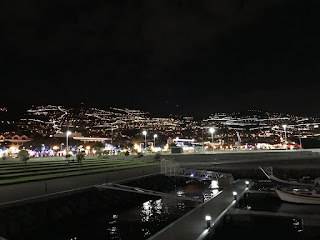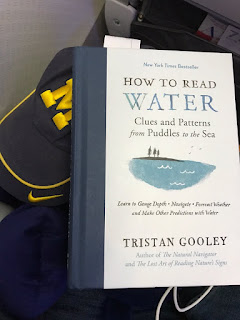Gearing up now for the next leg of the trip.

So the next leg is from Cartagena, Spain, where the boat currently sits, to Santa Cruz, Tenerife. Hopefully with stops at Gibraltar, Porto Santo, & Madeira.
http://tinyurl.com/js4zgqc
I've been ordering (Amazon to the rescue!) a bunch of minor items to repair a few things and to make the boat more comfortable. First off, I ordered new LED bulbs for the steaming light.
Here's a pic of the package & bulb:


This bulb looks
identical to the (incorrect) bulb that was in the steaming light that I wrote about previously being a problem. Once again, there are absolutely no markings on this bulb; this includes any stamping on the base indicating wattage. I'll need to mark these bulbs with a marker so they don't get confused with the bulbs that are currently on the boat. The only way I can differentiate is to connect them to a power source to determine which contacts produce light.
Other items recently purchased:
New flag halyards for the starboard & port spreaders. The current halyards are the exact same type of line as that used for the lazy jacks. This makes it very difficult to figure out which line to adjust without trial and error. Seems like it would be a 50/50 chance on selecting the right one but my luck hasn't proven out to match the theoretical probability :-)
16 gauge tinned wire and heatshrink connectors. Remember to "just say no" to solid wire on a boat (use stranded wire only) and preferably use tinned wire as a salty environment can degrade copper over time. Solid wire can break due to the vibrations experienced on a boat.
A waterproof LED flashlight for each helm station. I'll attach each with a lanyard to a location by the port and starboard wheels. When it's extremely dark out it can be difficult to see the engine controls. Generally if I'm on watch I have my headlamp available (with a red LED) but in an emergency it can be really handy to have a bright light readily available.
 Sodium Metabisulfite
Sodium Metabisulfite This chemical is used to "pickle" the watermaker. Anytime the watermaker is to be left idle for more than a week it's best to leave it in a state that will prevent the growth of bacteria or other things that could harm the membrane. Mix 1/4 cup with two gallons of (fresh)water and draw it into the system under low pressure. Then cap the system off.
When preparing to use it again, flush the system thoroughly before sending new water into the storage tanks. The watermaker has a spigot at the sink to facilitate a taste test.

A
laser rescue light. These are now sometimes kept onboard instead of or in addition to conventional flares. The Cornell rally requires flares be aboard but also recommends a "laser flare". Tests show the green laser to be much more visible than the red version. I assume that's also why they cost twice as much (about $200 vs. $100). I figure having the minimum requirement of conventional flares augmented with a laser flare is a conservative approach. This will be held in our ditch bag. I'm certain that I would rather use a laser signal if I were in a liferaft than a conventional flare; this makes me recall the last scene in
All is Lost. This laser servers two purposes. One, the obvious, to signal a rescue craft. Secondly though, whenever the laser light hits a reflective surface (reflective tape for instance), it becomes very visible. This can be invaluable for finding a person in a life vest amongst the waves and also to find navigational buoys that have reflective tape on them.
Carlos has taken on the task of acquiring parachute flares, handheld flares and smoke cartridges as I can't carry those on board a plane.

Towels. I learned a lesson on the first leg, you can never have enough towels. Every time someone came in from the helm while it was raining or with lots of spray, there was water all over. There's no hanging locker on this boat so this wet gear usually ends up in the salon and makes a real mess of things when there are no dry towels to mop the water up with.





















































